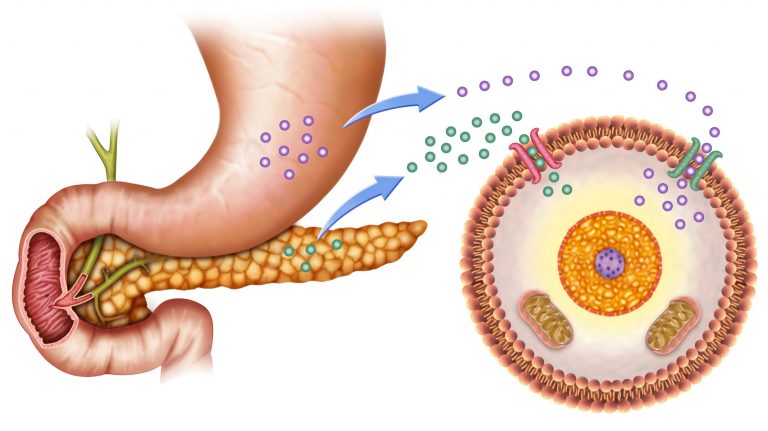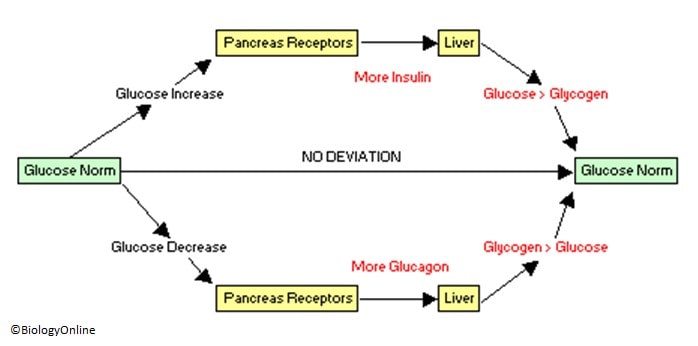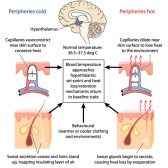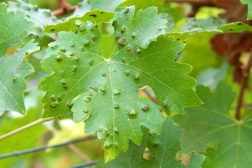Sugar Homeostasis

Insulin from pancreas stimulates the cell to absorb glucose from the gut
Table of Contents
Blood Sugar Regulation
As described in Cell Biology tutorials, the body requires volumes of glucose in order to create ATP. The amount of ATP demand fluctuates, and therefore the body regulates the availability of glucose to maximize its energy making potential.
Two hormones are responsible for controlling the concentration of glucose in the blood. These are insulin and glucagon. The diagram illustrates the principle of negative feedback control in action involving blood/sugar levels.

Pancreas Receptors
The receptors of the pancreas are responsible for monitoring glucose levels in the blood. Two types of cells release two different hormones from the pancreas: insulin and glucagon.
- When blood glucose level is high and glucagon level is low: more insulin is released by the pancreas and targets the liver
- When blood glucose level is low and glucagon level is high: less insulin is released by the pancreas and targets the liver
The Liver
The liver acts as a storehouse for glycogen, the storage form of glucose. The effects of insulin and glucagon on the liver are as follows:
- Insulin – Insulin is released as a result of an increase in glucose levels. It promotes the conversion of glucose into glycogen so that the excess glucose can be stored for a later date in the liver.
- Glucagon – Glucagon is released as a result of a decrease in glucose levels. It promotes the conversion of glycogen into glucose so that the lack of glucose can be compensated for by the new supply of glucose.
Diabetes
Diabetes insipidus is a condition where excess urine is excreted caused by the sufferer’s inability to produce ADH and promote the retention of water.
Diabetes mellitus is another form of diabetes wherein the sufferer does not have the ability to produce sufficient insulin. Without enough insulin, glucose cannot be converted into glycogen. Anyone who has this condition usually has to take injections of insulin after meals and snacks to maintain their storage of glucose needed in emergencies.
Fight or Flight
In emergencies, adrenaline is released by the body to override the homeostatic control of glucose. This is done to promote the breakdown of glycogen into glucose to be used in the emergency. These emergencies are often known as ‘fight or flight reactions’.
Adrenaline is secreted by the adrenal glands. The secretion of it leads to increased metabolism, breathing, and heart rate. Once the emergency is over, the adrenaline levels drop, and the homeostatic control of glucose is once again back in place.
The next tutorial investigates temperature regulation in homeotherms.
References:
- Jakoi, E. (n.d.). Introductory Human Physiology ©copyright Emma Jakoi ENDOCRINE PANCREAS & FUEL HOMEOSTASIS LEARNING OBJECTIVES. https://web.duke.edu/histology/MBS/Videos/Phys/Phys%207.5%20Fuel%20Fed%20State/Phys%207.5%20and%207.6%20Fuel%20Fed%20and%20Fasted%20State%20NOTES.pdf
- What is Diabetes? | NIDDK. (2018, November 28). National Institute of Diabetes and Digestive and Kidney Diseases. https://www.niddk.nih.gov/health-information/diabetes/overview/what-is-diabetes
- Harvard Health Publishing. (2018, May). Understanding the stress response – Harvard Health. Harvard Health; Harvard Health. https://www.health.harvard.edu/staying-healthy/understanding-the-stress-response
You will also like...

Indicator Species and Endangered Species
Certain species are capable of expressing characteristics indicative of the state of the ecosystem they occupy. They are..

Temperature Regulation in Animals
This tutorial elucidates body temperature regulation. Know the details here to learn how the body sets the body temperat..

The Water Cycle
The water cycle (also referred to as the hydrological cycle) is a system of continuous transfer of water from the air, s..

Insects
There are more species of insects than any other species combined. This surely illustrates that insects have the selecti..

Plant Cell Defense
Plants protect themselves by releasing hydrogen peroxide to fight against fungal invasion. Another way is by secreting c..

Respiration
The human respiratory system is an efficient system of inspiring and expiring respiratory gases. This tutorial provides ..
